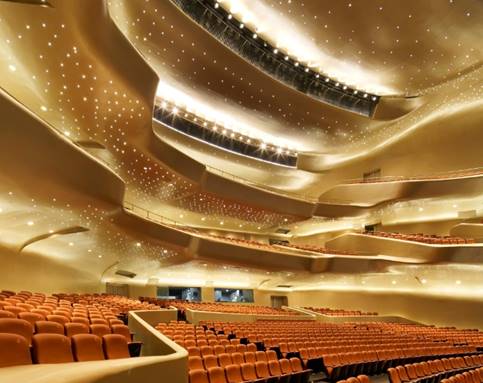
Fig.1 Foldism: Zaha Hadid Architects, Guang Zhou Opera House, 2003-2010
Parametricism: The Next Decade
Patrik Schumacher, London 2020
Published in:
a+u Architecture and Urbanism 2020:04, No. 595, Feature: Computational Discourses
Parametricism is architecture’s answer to contemporary, computationally empowered civilization. Parametricism is the only style that can take full advantage of the computational revolution that drives contemporary civilization. More specifically it is the only style congenial to recent advances in structural and environmental engineering capacities based on computational analytics and optimization techniques. All other styles are incapable of working with the efficiencies of the adaptive structural and tectonic differentiations that issue from the new engineering intelligence, i.e. they force its adherents to waste this opportunity and thus to waste resources. So, once contemporary architects take those performance conditions seriously they are nearly inevitably led to Parametricism and the geometric transcoding of parameter variations into differentiated geometries. This much pertains to Parametricism’s obvious superiority in terms of the built environment’s technical functionality. What is perhaps less obvious but by no means less compelling is Parametricism’s superiority with respect to the advancement of the built environment’s social functionality. Due to its versatile formal and spatio-organisational repertoire Parametricism is the only contemporary style that can adequately address the new societal tasks posed to architecture by the new social dynamics engendered by the information age. Accordingly, Parametricism is by now addressing all major urban building tasks, on all scales.
However, these facts are only rarely appreciated. The functionality of Parametricism – whether technical or social – is usually seen as suspect. Indeed the works of Parametricism are not even presumed to aim at functionality, they are misunderstood as expressions of artistic or technophil exuberance, or as esoteric design process fetishism. This misunderstanding is unfortunate, but perhaps excusable, since on the one hand, the functionality of many projects remains indeed suspect and, on the other hand, the discourse of parametric design movement has not placed enough emphasis on the discussion and explication of the practical advantages of Parametricism, especially in the domain of social functionality. This is an aspect of the movement’s avant-garde character where artistic and technophil exuberance (as well as “esoteric” internal design process orientation) must initially indeed play a part. But this aspect must recede now as the movement matures, goes mainstream and wants to be taken serious as contender for global best practice.
However, the 2008 economic crisis and subsequent great recession has slowed down Parametricism’s expansion into the mainstream. Moreover, the misleading assessment of Parametricism turned into outright hostility during the last few years of economic stagnation when the investment into spatial and formal complexity was regarded to be an indefensible self-indulgence in the face of general austerity. Parametricism - associated with the unsustainable profligacy of the boom years – therefore experiences a crisis of legitimacy.
In order to succeed in its ambitious quest for unifying the discipline’s fragmented efforts under its banner, in the coming decade, Parametricism has to shift its focus from foregrounding formal principles and design processes to the foregrounding of functional principles and societal purposes (while taking the new formal options and design processes of parametricism for granted). Design research continues but becomes more strategic, applied and performance oriented, with a strong emphasis on social performativatyi. This emphasis on social performativity, in the face of increasing societal complexity, must be supported by a new methodology and tool set. The author is developing this enhanced capacity via the development of semiologically empowered life-process simulationsii, further introduced towards the end of this paper.
History
The author started to promote ‘Parametricism’ in early 2008, at the Smart Geometry Conference in Munich, and later that year at the Venice Architecture Biennale where the ‘Parametricist Manifesto’ was launched and published. The concept is both retrospective and prospective. The intention was to mark out, recognize and galvanize the important innovative work of a whole generation of young architects that had not only charted a new path for architecture on the basis of new computational design tools but that had forged a coherent movement where research, knowledge and values had been building up cumulatively over the previous decade. A year later, in 2009, the author published the article ‘Parametricism: A New Global Style for Architecture and Urban Design’iii in AD (Architectural Design).
To talk about a new emerging epochal style seemed in order. It was clear that the movement identified by the proposed name had already outgrown, in size and significance, a precursor movement that had 20 years earlier been hailed under the banner of ‘Deconstructivism’. Parametricism emerged within the ambit of the protagonists of deconstructivism, via a new generation of protagonists within the design studios of Peter Eisenman, Zaha Hadid, Frank Gehry, Rem Koolhaas and Wolf Prix. Young protagonists like Greg Lynn a.o. within these studios, that were all hotbeds of avant-gardism in the early 1990s, started to invest in computational design processes to cope with the new level of geometric complexity aspired to within these deconstructivist studios. The new tools, in turn, impacted the further development of the work. A new movement started to emerge under the banner of “Folding in Architecture”, proclaimed in an eponymous issue of AD in 1993. This emerging movement was also supported by schools of architecture like New York’s Columbia University, lead by deconstructivist Bernard Tschumi, and London’s Architectural Association where Jeff Kipnis made an impact at that time. In 1994 Columbia university made its commitment to the digital era by setting set up its so called “paperless studio” empowered by Silicon Graphics machines that were more than state of the art at that time. The author, who was, with Zaha Hadid, teaching ‘Folding’ at Columbia University in 1993 and 1998, at Harvard University in 1994, and then at the Architectural Association since 1996, has always implicitly considered ‘Folding’ as the beginning of ‘Parametricsim’. More recently this was made explicit by charting the stages of Parametricism, in terms of subsidiary styles, as follows: Foldism, Blobism, Swarmism and finally Tectonismiv, the latest, most mature and sophisticated substyle within the epochal paradigm of Parametricism.

Fig.1 Foldism: Zaha Hadid Architects, Guang Zhou Opera House, 2003-2010
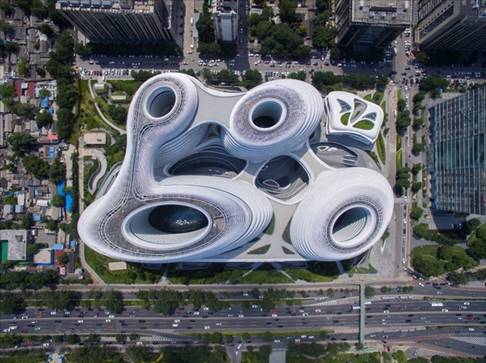
Fig.2 Blobism: Zaha Hadid Architects, Soho Galaxy, Beijing 2008 - 2012
The aspirations of Tectonism began to emerge when the designs of Foldism and Blobism started to be implemented at scale and the protagonists of the movement shifted their attention and discourse increasingly from conceptual and formal questions to the problems of engineering, fabrication and construction. At this point the congeniality of Parametricism in architecture with the new analytical, computationally empowered capacities of the engineering disciplines, i.e. structural and environmental engineering, became evident and the respective digital tools, like finite element analysis and sun exposure maps, were eagerly appropriated by the Parametricist architects. These tools could take in complex parametric forms and allowed a parametric feedback and rationalisation loop to be established. Another factor in the emergence of Tectonism was the rediscovery and wholehearted embrace of the work of Frei Otto and his research group.
Tectonism
In recent years structural engineering science radically transformed its ontology and methodology from a typological to a topological paradigm. This implies a radical reset of the categories that guide engineering practice. The modern forms of engineering rationality based on system types are now exposed as inefficient. We now witness the proliferation of radically new forms that the new paradigm makes possible. This radical expansion of structural possibilities – mirroring the endless forms of nature - is congenial with the requirements of contemporary architectural design where a much higher degree of versatility is required to meet the challenges of a much more complex society.
In contrast with the modern typological approach based on discrete system types, contemporary engineering has become topological and can thus better serve the new architectural style that aims to create spaces which are morphing different spatial sections into a seamlessly differentiated continuum that resists any decomposition into discrete spaces that could be conveniently structured by discrete structural systems. In traditional structures the ability to analyse and calculate the behaviour of the structure is premised upon the purity of structural type and the severing of all redundant connections. However, conceptually distinct structural system types - beam vs arch etc. – are disappearing from engineering due to the new modelling techniques like Finite Element Analysis. We thus witness a radical conceptual shift - a paradigm shift – within engineering. This is also an ontological shift as it revolutionises the most basic entities that constitute a structure. We might call this shift the shift from typology to topology. It is at the same time a conceptual shift from parts to particles with respect to the mode of decomposition for calculation. While this shift in structural engineering has not been triggered by the new architectural style, this style is surely uniquely congenial to these engineering advances. These advances follow from the internal logic of structural science in the pursuit of structural optimization, in combination with the computational empowerment that makes this pursuit feasible. The re-tooled engineer allows the structural forces to flow freely through the surfaces provided by the architect. This is the era of structural fluidity. It thus becomes evident that the architectural style of Parametricism is congenial with the most advanced engineering thinking, and indeed that Parametricism is the only style that fully utilizes the new engineering intelligence. This explicit and congenial utilisation engenders the latest stage of Parametricism: Tectonism.
Tectonism implies the stylistic heightening of engineering- and fabrication-based form-finding and optimization processes. To be clear, despite its dependency on engineering logics, ‘Tectonism’ is an architectural style. In fact, the concept of style(s) is a category that only makes sense within the discipline of architecture, as it necessarily refers to recognisable visual characteristics as the designer’s concern. In contrast to engineering, all design is communication. Since the engineering and fabrication methods that Tectonism utilizes are inherently plural and open ended, this additional rigour comes along with additional tectonic variety and thereby offers a new reservoir of morphological physiognomies. This empowers designers to give a particular, recognisable identity to each of their projects, or to avoid monotonous repetition in their larger projects by differentiating their tectonic articulation. Tectonism thus delivers much more expressive variety than Foldism or Blobism, without descending into arbitrary form invention.
Parametricsim has the formal repertoires to shape and fit buildings so as to meet these complex requirements in ways that can also maintain legibility in the face of these unprecedented complexities. Tectonism achieves this while simultaneously meeting structural and environmental optimisation criteria. Furthermore, the morphologies that result from this pursuit gain – as if by serendipitous coincidence – additional visual legibility advantages. It is the very rigor of the engineering logics that ruthlessly impose their selection criteria at every point across the overall form and that thus not only sponsor a formal unity across the project but also insure that the morphological variations are rule-based and thus predictable and legible despite their complexity.
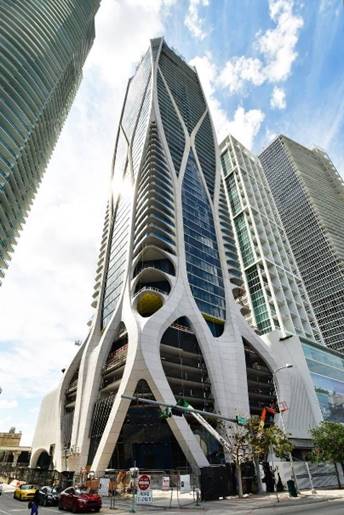
Fig. 3 Tectonism utilising structural engineering logic:
Zaha Hadid Architects, One Thousand Museum, Residential Tower, Miami 2012 - 2020
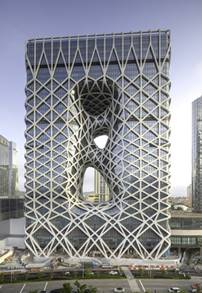
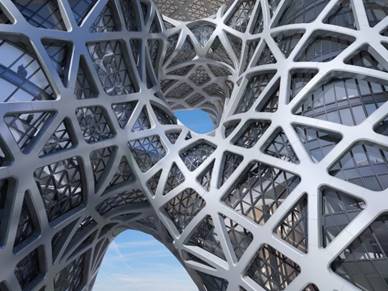
Fig. 4-5 Tectonism utilising structural engineering logic:
Zaha Hadid Architects, Morpheus, Hotel Tower, Macao 2013 - 2018
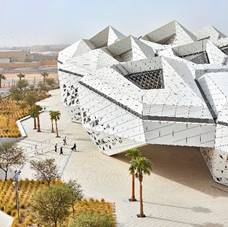
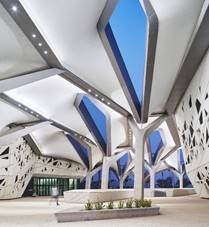
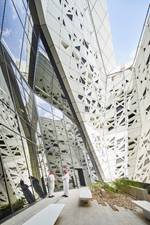
Fig. 6-8 Tectonism utilizing environmental engineering logic:
Zaha Hadid Architects, Rhyjadh 2012 - 2018
Spatial Communication as Architecture’s Core Competency
Parametricism in general, as well as Tectonism in particular are well-suited styles to elaborate architectures with an enhanced communication capacity. Where, as is the case within the parametric design paradigm, every design action engenders a number of design reactions within the overall composition, where every rule-based visible feature allows an inference back to its cause or motivation and where further all rule-based subsystem differentiations are correlated and thus resonate with each other, there the conditions for an information-rich, eloquent architectural communication are well prepared.
The demarcation between architecture and engineering rests on the distinction of the built environment’s social functioning from its technical functioning. The social function of architecture is the ordering of social processes. This is achieved via spatial organisation. However, buildings function only by empowering users to find their way and each other within this organisation, i.e. the building must function as ordering and guiding communicative frame, and is thus functioning via its appearance and legibility. The core competency of architecture comprises thus, besides organisation, the crucial task of articulation. Legibility involves two aspects: the perceptual palpability and the semantic-informational charge. Accordingly, the general task of articulation bifurcates into the two specific tasks of phenomenological articulation and semiological articulation. Both aspects need to guide the designer’s decision making process in the context of the proliferating options that emerge from the new engineering and fabrication methods.
The use of structural form-finding methods disciplines the spatial morphologies in ways that are advantageous for the task of articulation, i.e. the task of elaborating a systematic spatial language. Semiological articulation can then map significant programmatic distinctions onto conspicuous morphological distinctions so that morphological differences indicate programmatic differences. The architectural task is thus to make engineering logics speak, via a designed visual code that selects a sub-set from the set of all conceivable structural morphologies and orchestrates these into a telling language. This language orients users as a navigation aid and tells them about the social offerings at hand. The built forms are not speaking about their structural performance (which is of no interest to users) but about their social purposes, and this communication facilitates these very purposes. This aim of communication establishes the semiological project as central aspect of any non-trivial architectural project. The semiological project delivers a decisive augmentation of architecture’s capacity to deliver an enhanced social functionality. A semiologically cohered, information-rich environment gives every user more intuitively retrievable information and awareness.
Agent-based Life-Process Modelling
Architectural semiology can be operationalized via a new design simulation tool that is bound to become a pervasive medium to test and anticipate architecture’s social functionality. This tool is not yet available but the subject of a research project within ZHA. The augmentation of the semiological project by means of this prospective agent-based life-process modelling will son enable us to test and ascertain the enhancement of the project’s social functionality, i.e. the gains in operational efficiency delivered by the semiologically augmented design should become manifest via simulation.v
Agent-based life-process modelling is a new key working methodology that focusses in on architecture’s core competency. The simulation methodology developed under the research agenda ‘Agent-based Parametric Semiology’ is conceived as a generalisation and corresponding upgrade of the kind of crowd simulations currently offered by traffic and engineering consultants concerned with evacuation, circulatory throughput, the identification of bottlenecks and zones of congestion etc. Here is the summary list of innovations that the research group is working on and that must be delivered by a generalized and semiologically informed life-process modelling:
The meaning of architecture, the prospective life processes it frames and sustains, is modelled and assessed within the design process, thus becoming a direct object of creative speculation and cumulative design elaboration. This allows for the elaboration and successive refinement of the design with respect to its ultimate criteria of success, in the relevant terms of the life and communication processes to be facilitated: footfall, dwell time, encounter frequency, encounter diversity, can be quantified and the quality of interaction scenarios can be intuitively appraised by observing the simulation.
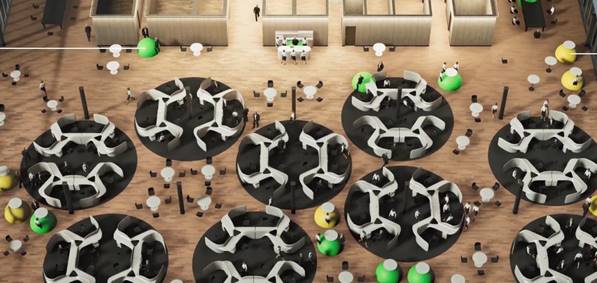
Fig.9 Life-Process Simulation: Zaha Hadid Architects, AI Research Group
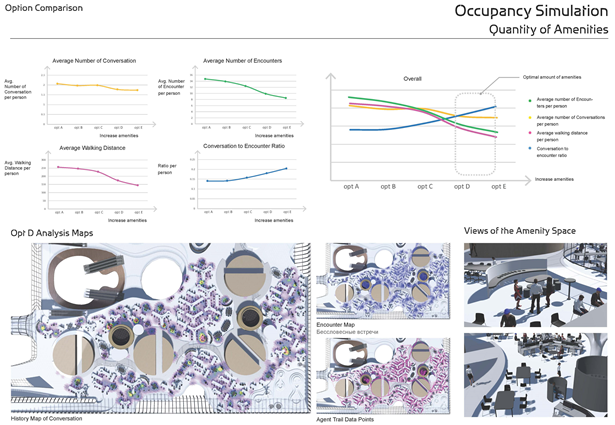
Fig.10 Life-Process Simulation: Zaha Hadid Architects, Sberbank Technopark, Moscow 2016 - tbc
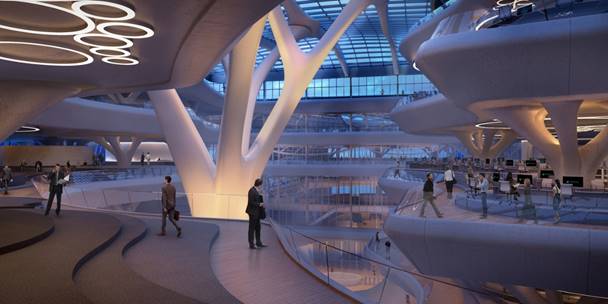
Fig.11 Zaha Hadid Architects, Sberbank Technopark, Moscow 2016 - tbc
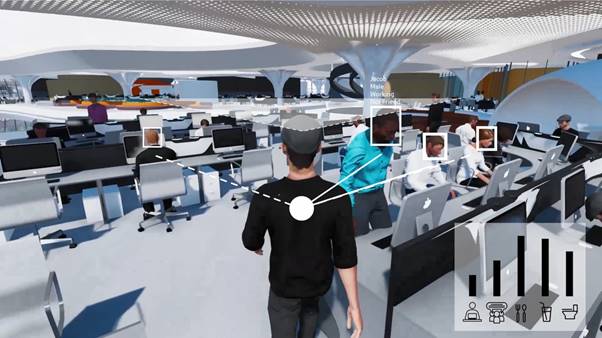
Fig.12 Life-Process Simulation: Zaha Hadid Architects, Sberbank Technopark, Moscow 2016 - tbc
We should thus expect that the generalized life process modelling envisioned here will be compelling to both architects and clients, and soon become architecture’s new best practice standard. A drawing or model that does not include interacting agents can no longer count as architectural drawing or model.
End.
i Patrik Schumacher, Social Performativity: Architecture's Contribution to Societal Progress, Published in: The Routledge Companion to Paradigms of Performativity in Design and Architecture, Ed.Mitra Kanaani, Routledge, Taylor & Francis Group, New York & London 2020
ii Patrik Schumacher, Parametric Order – Architectural Order via an Agent Based Parametric Semiology, Published in: Adaptive Ecologies – Correlated Systems of Living by Theodore Spyropoulos, AA Publications, London 2013
iii Patrik Schumacher, Parametricism - A New Global Style for Architecture and Urban Design, Published in: AD Architectural Design - Digital Cities, Vol 79, No 4, July/August 2009, guest editor: Neil Leach
iv Patrik Schumacher, Tectonism in Architecture, Design and Fashion - Innovations in Digital Fabrication as Stylistic Drivers, Published in: AD 3D-Printed Body Architecture, guest-edited by Neil Leach & Behnaz Farahi, Architectural Design, Profile No 250, November/December 2017, 06/Vol 87/2017
v Patrik Schumacher, Advancing Social Functionality via Agent Based Parametric Semiology, Published in: AD Parametricism 2.0 – Rethinking Architecture’s Agenda for the 21st Century, Guest-edited by Patrik Schumacher, AD Profile #240, March/April 2016